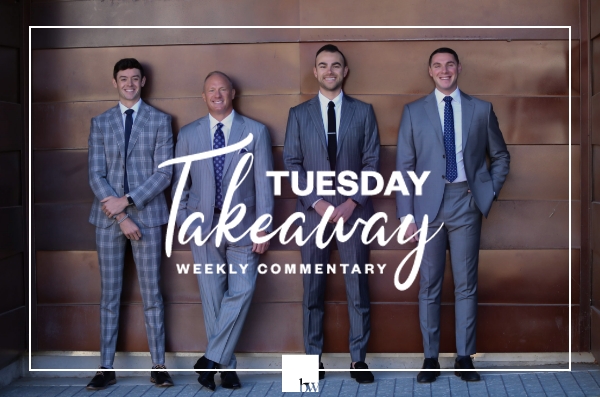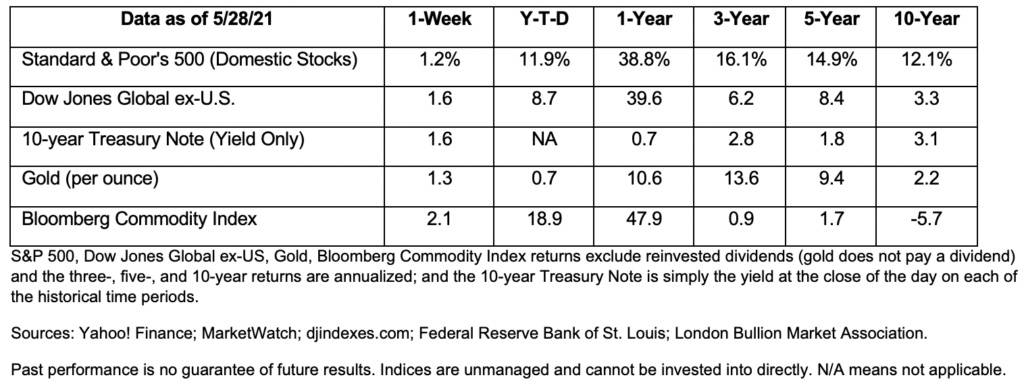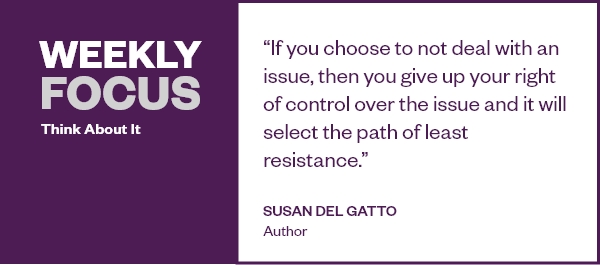
Market Insights:
January 2, 2024
Posted on January 02, 2024
Planning and Guidance, Tailored To Your Life and Goals
Tuesday Takeaway
Posted on June 01, 2021

Are we at a tipping point?
One side effect of the pandemic was a collapse in demand for oil, which led to “the largest revision to the value of the oil industry’s assets in at least a decade,” reported Collin Eaton and Sarah McFarlane of The Wall Street Journal.
Last week brought another reckoning for big oil as a court ruling and shareholder influence made it clear companies need to revisit their strategies for emissions reductions and clean energy. Here’s what happened:
Major stock indices in the United States finished last week higher.
(The one-year numbers in the scorecard below remain noteworthy. They reflect the strong recovery of U.S. stocks from last year’s coronavirus downturn to the present day.)


The COVID-19 pandemic created enormous losses for many companies so it might seem logical some CEO pay packages would decline along with companies’ profits. In fact, a number of CEOs announced high-profile salary cuts last year, reported Axios.
The stinger is salary is often a small part of CEO compensation. While executive compensation packages vary from company to company, they often include:
When all aspects of CEO pay are considered, the majority of CEOs received higher pay in 2020.
“Fortunately for those CEOs, many had boards of directors willing to see the pandemic as an extraordinary event beyond [CEOs’] control. Across the country, boards made changes to the intricate formulas that determine their CEOs’ pay – and other moves – which helped make up for losses created by the crisis,” reported Stan Choe of the AP.
As a result, median pay for CEOs at companies in the Standard & Poor’s 500 Index was $12.7 million, according to data analyzed by Equilar for the AP. That’s a 5 percent pay increase over 2019 levels. In contrast, wages and benefits for non-government workers who were employed went up by 2.6 percent in 2020. “Companies have to show how much more their CEO makes than their typical worker, and the median in this year’s survey was 172 times. That’s up from 167 times for those same CEOs last year, and it means employees must work lifetimes to make what their CEO does in just a year,” reported AP.

As the pandemic eases and companies begin the process of calling their workers back into the office, some experts predict a wave of resignations will soon crest. Several factors are involved, including people staying in jobs rather than leave during the shutdown and people having time to consider their lives and what is most important (which isn’t always their job), and starting to make major life changes.
To learn more about all the factors contributing to a changing post-pandemic work force, read Anthony Klotz’ article. Klotz is associate professor of management in the Mays Business School at Texas A&M University, and was the first to raise the alarm about the upcoming resignation wave.
